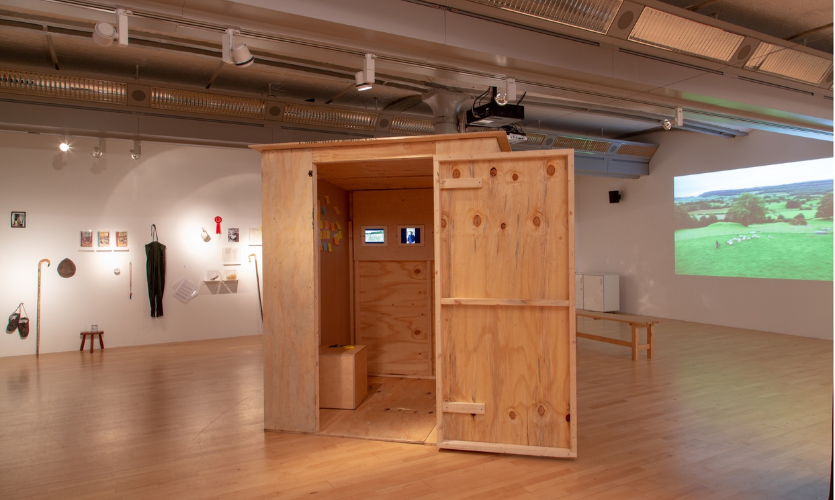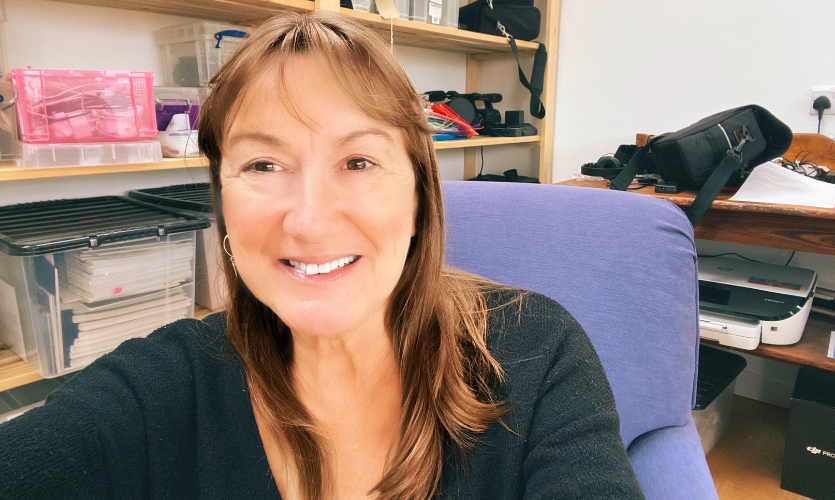Art providing a ‘window into the world of the shepherdess’
Liverpool School of Art and Design’s Dr Patricia MacKinnon-Day is celebrated in a new publication that traces a decade of her work telling the stories of rural women

Pictured above: The Calling Sheds at Tate Liverpool
Dr MacKinnon-Day, a Reader in Site Intervention Art at LJMU, has spent the past ten years working closely with women from rural communities across Britain, broadening perspectives and offering a platform for the underrepresented voices of women in agriculture.
Her works include The Calling Sheds at Tate Liverpool and Tracing Shadows at Art Gene, and demonstrate how inclusive site intervention practice can offer marginalised individuals or communities a voice.
“In the past ten years, an ongoing focus of my work has facilitated a platform for rural voices, embracing peripheral perspectives to broaden awareness of those dedicated to the preservation of their rural heritage,” she says. “My aim has been to extend my sustained focus on women working on the periphery, underrepresented subjects, to give them a voice whilst engaging communities in cosmopolitan and rural community locations.”
Academics Nicola Verdon, Professor of Modern British History at Sheffield Hallam University and Dr Rosemary Shirley, Associate Professor Museum Studies at Leicester University have written essays for the publication alongside independent curator Charu Vallabhbhai.
Professor Verdon said: “Over the last decade Mackinnon-Day’s research and artworks have brought the varied roles of modern-day farm women into the public arena, with The Calling Sheds and Tracing Shadows providing a window into the world of the shepherdess. Crucially these works provide space and time for women to voice their own narratives, struggles and successes and give deserved attention and recognition to a group of rural women whose work has for far too long been relegated to the realm of artistic fancy.”
Dr Shirley said: “As well as helping to raise visibility and challenge stereotypes, this work creates a forum for sharing the day-to-day realities of farming and the unexpected stories, both of which can encourage us to question our assumptions or perhaps even our lack of knowledge about what contemporary farming entails. It is in this process of sharing where connections are made; connections between gallery visitors and farmers, animals, landscapes, and also connections between the farmers themselves.”
Patricia MacKinnon-Day: Tracing the Narratives of 21st Century Women Shepherds can be read online.

Dr MacKinnon-Day shares further insight into her work below:
“My recent projects The Calling Sheds and Tracing Shadows, forms a continuation of my long-term collaboration with farm women, extending from Rural Voices and Private Views Made Public to Tracing the Landscape. Emphasis on first-person narrative and face to face dialogue is a mechanism used throughout my collaborative approach, demonstrating how inclusive site intervention practice can offer marginalised individuals or communities a voice.
“The shepherds of The Calling Sheds were invited to critically respond to recorded audio conversations in my oral history archive of farmers in Cheshire and Cumbria. This open dialogue and layering of experiences from different farm locations assisted in my evaluation of earlier conversations, informed my creative process and lead to new outputs and sources for investigation.
“The Calling Sheds project was a collaboration with four female shepherds based in England, Scotland, Republic of Ireland and Wales. The process resulted in the production of new bodies of creative work but equally important was the process, which itself was a unique partnership between a visual artist and four women who are committed to the agrarian life of sheep rearing.
“Each shepherdess agreed to site a shed on their farm for a year, during which time it would become one of the structures they inhabit in their working lives, for them to personalise and own. I visited the shepherds whilst they were working on their farmland with the sheep, making sound recordings and using drone technology to follow the course each woman takes with her flock. On return to my studio I then produce new bodies of work in response to my experiences with the shepherds on their farms, using the recorded material. I asked each shepherd to collect 10 items for me to bring back from their farms and their lives. Taking these first to my studio and then to my exhibition at Tate Liverpool, the objects acted as a metaphor for each shepherd’s existence. The displayed personal objects were shown alongside two new works, the first a moving image projection and the second a soundscape that I created, splicing and editing with a soundscape of a soprano’s voice composed in response to the shepherds calling to their flocks. The shepherds’ calling sounds represent their farming heritage, a tradition of communication between farmer, dog and flock. Bringing this to an urban space, their own language remains unintelligible to the ear while remaining a fact of their voices, as under-represented women, being heard.
“Alongside the four sheds located on each sheep farm there was a fifth shed that occupied the gallery space at Tate Liverpool. The shed acted as a portal, providing an interface, by live link, to each shepherd at specified times, daily during the residency. Visitors were invited to speak directly to the shepherds through iPads installed in the shed.
“The project has oscillated between rural and urban locations, commencing on the farms, extending to my studio and the Tate in central Liverpool and culminating back in the rural community with a final presentation that marked a series of collaborations between the farm women and creative practitioners. I then worked in partnership with Art Gene in Cumbria to deliver Tracing Shadows, an exhibition alongside a series of live music and spoken word events, taking the output back to the rural communities and lives that have informed and inspired the making of these new bodies of work. In this project, my aim has been to extend my sustained focus on women working on the periphery, underrepresented subjects, to give them a voice whilst engaging communities in cosmopolitan and rural community locations.”
Find out more about studying at Liverpool School of Art and Design.


